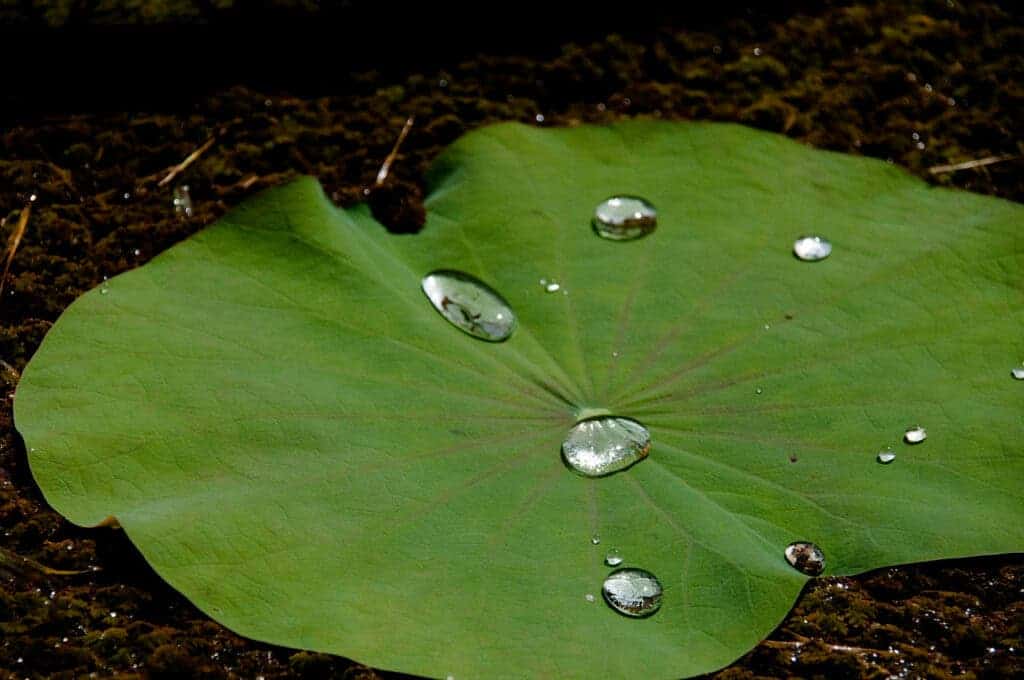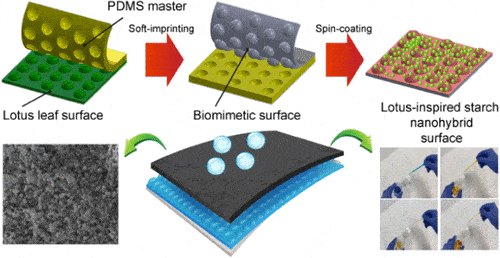Researchers are developing a self-cleaning, eco-friendly bioplastic by taking inspiration from the lotus leaf.

Plastic waste is one of the most widespread types of pollution on the planet, with particles of this material permeating soil, water, and the atmosphere. The main drivers of this issue are single-use plastics combined with inadequate recycling capacity. Since plastic is very chemically-stable, it doesn’t break down in the wild, leading to rapid build-ups.plastic
In a bid to help address this issue, researchers at the RMIT University in Melbourne, Australia, have developed a self-cleaning bioplastic that degrades rapidly once it comes into contact with soils. The team envisions their material being used in packaging for fresh foods and takeaway. Since it is compostable (breaks down naturally), swapping regular plastic for this new bioplastic in these applications would lead to tremendous environmental benefits, as food packaging is one of the main applications for single-use plastic.
Lotus-inspired
“Plastic waste is one of our biggest environmental challenges but the alternatives we develop need to be both eco-friendly and cost-effective, to have a chance of widespread use,” says RMIT PhD researcher Mehran Ghasemlou, lead author of a duo of papers describing the material.
“We designed this new bioplastic with large-scale fabrication in mind, ensuring it was simple to make and could easily be integrated with industrial manufacturing processes.”
Ghasemlou explains that nature is full of ingenious designs and solutions to a variety of problems researchers are trying to solve, and we can draw on this wealth of natural expertise when designing new, high-performance materials that can serve a variety of roles. The new bioplastic is one example of this.
During the development process, the team replicated the “phenomenally water-repellent structure of lotus leaves” into their material to ensure it has excellent hygienic properties. Lotus leaves are covered in tiny pillars, all covered in a layer of wax. This prevents water droplets from adhering to their surface, instead simply rolling off as gravity or wind pulls at them. As they slide off, these droplets carry away any particles from the leaves, keeping them clean.

The surface of the new material is imprinted with a pattern similar to that on lotus leaves. A protective layer of silicon-based organic polymer (PDMS) is then applied. The bioplastic itself is made from starch and cellulose, cheap and widely-available materials in use in a great number of applications today; this means that the logistics needed to create the bioplastic are already well-developed, making it much easier for commercial actors to use the material.
Its manufacturing process requires only simple equipment and requires no high temperatures. Such a process can be carried out cheaply and many areas of the world have the technical capability for it. The team is confident that these traits will help with getting production of the bioplastic rolling en masse.
These materials also promote biodegradability and are non-toxic, meaning that the bioplastic can be used as compost after serving its purpose and actually support natural environments instead of polluting them.
It also offers good physical properties such as strength, making it a suitable replacement for current plastics in a wide range of consumer applications. Due to its biodegradable nature, short-lived items such as single-use containers would be most suited for this bioplastic.
Most compostable or biodegradable plastics today need to undergo industrial processes and be exposed to high temperatures to break down, the team explains. Their bioplastic, however, requires no such intervention — it breaks down naturally and quickly in soils.
“There are big differences between plant-based materials — just because something is made from green ingredients doesn’t mean it will easily degrade,” Ghasemlou said. “We carefully selected our raw materials for compostability and this is reflected in the results from our soil studies, where we can see our bioplastic rapidly breaks down simply with exposure to the bacteria and bugs in soil.”
“Our ultimate aim is to deliver packaging that could be added to your backyard compost or thrown into a green bin alongside other organic waste, so that food waste can be composted together with the container it came in, to help prevent food contamination of recycling.”
The papers “Biodegradation of novel bioplastics made of starch, polyhydroxyurethanes and cellulose nanocrystals in soil environment” and “Robust and Eco-Friendly Superhydrophobic Starch Nanohybrid Materials with Engineered Lotus Leaf Mimetic Multiscale Hierarchical Structures” have been published in the journals Science of The Total Environment and ACS Applied Materials & Interfaces, respectively.






